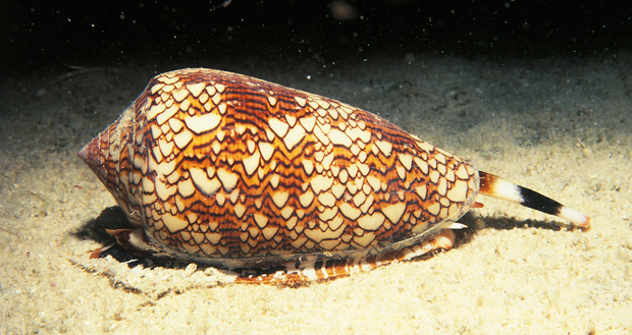

The injected venom of an individual cone snail contains >1000 cysteine-rich peptides (conopeptides or conotoxins) that target a diverse range of neuronal ion channels and cell membrane receptors 4, 5. These molluscs prey on polychaete annelids (vermivores), molluscs (molluscivores) or fish (piscivores) using venom peptides injected intramuscularly (i.m.) through a hollow radula tooth harpooned into prey 3. They possess a long venom duct that can differentially secrete compartmentalised predatory and defensive venoms 2. This study highlights the importance of using ecologically relevant animal behaviour models to decipher the complex neurobiology underlying the prey capture and defensive strategies of cone snails.Ĭone snails are a group of ~800 species of marine molluscs endemic to Indo-Pacific and Atlantic coral reef systems 1. ρ-TIA may act alone and not as part of a cabal, since it did not synergise with conopressins and/or conantokins. ρ-TIA inhibited the zebrafish α 1-adrenoceptor, confirming ρ-TIA has the potential to reverse the known stimulating effects of norepinephrine on fish behaviour. tulipa venom (EC 50 = 190 nM) dramatically reduced the escape response of zebrafish larvae when added directly to aquarium water.

In contrast, low concentrations of the non-competitive adrenoceptor antagonist ρ-TIA found in C. tulipa venom failed to produce a nirvana cabal-like effect in zebrafish. In this study, we evaluated the behavioural effects of likely nirvana cabal peptides on the teleost model, Danio rerio (zebrafish). Surprisingly, the conantokins (NMDA receptor antagonists) and/or conopressins (vasopressin receptor agonists and antagonists) found in C. However, the active components of the nirvana cabal remain poorly defined. This unique feeding behaviour requires secretion of “nirvana cabal” peptides to dampen the escape response of targeted fish allowing for their capture directly by mouth. While most use a harpoon for prey capture, the Gastridium clade that includes the well-studied Conus geographus and Conus tulipa, have developed a net hunting strategy to catch fish. "Combined evidence that the behaviours of both species in this predator-prey relationship are altered by elevated carbon-dioxide suggests food-web interactions and ecosystem structure would become increasingly difficult to predict as ocean acidification advances over coming decades," the authors wrote.Cone snails use separately evolved venoms for prey capture and defence. This is clearly bad news for predatory cone snails, but it could also have a disruptive effect on their marine ecosystem. Too much time racing around and not enough lying in wait for prey is thought to be the reason for the snails' lack of hunting success in acidic waters. Snails tend to catch their prey by submerging themselves in a coral reef's sandy floor, and then shooting out their venomous harpoons. The cone snails in the more acidic water spent less than a third of the time buried in sandy compared with the control snails. "Although an increase in distance covered might be expected to increase foraging success, predators were no closer to their prey at the end of the 15-minute trial," the authors wrote in the paper. The hyperactive snails in the more acidic water only caught their prey around 10% of the time. This species of cone snail, Gibberulus gibberulus gibbosus, measures between about 30mm and 70mm.Ĭone snails in the equivalent of today's seas caught their prey around 60% of the time in the experiment. The cone snails sped up from an average speed of 4 millimetres a minute to 12 mm a minute.

Researchers at James Cook University in Australia exposed cone snails to realistic projected future levels of carbon in seawater, with the results featured in the journal Biology Letters. Incredible rare footage reveals the underwater world where creatures live beneath the Antarctic sea ice Speedier, but much less efficient


 0 kommentar(er)
0 kommentar(er)
